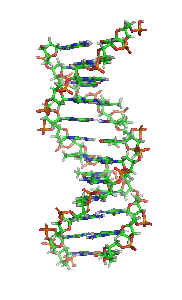Secrets of the Indian gene; first phase results of country's most ambitious science project out
26 April 2008
The Centre for Genomic Applications (TCGA), Delhi, has generated genetic information on over 4,000 genetic markers from over 1,000 biomedically important and pharmacogenetically relevant genes in reference populations encompassing diversity of populations from across the country.
TCGA is a joint venture between between the IGIB, a CSIR organization which is supported by the Department of Science and Technology (DST) and IMM-The Chatterjee Group. The latter is headed by Indian-born entrepreneur Dr Purnendu Chatterjee, who has also been the founding shareholder of Haldia Petrochemicals in West Bengal.
 This collaborative project also involved the efforts of scientists and researchers drawn from six laboratories from the Council of Scientific and Industrial Research (CSIR), along with the Kolkata-based Indian Statistical Institute, and anthropologists from several institutes,
This collaborative project also involved the efforts of scientists and researchers drawn from six laboratories from the Council of Scientific and Industrial Research (CSIR), along with the Kolkata-based Indian Statistical Institute, and anthropologists from several institutes,
This project is, till date, the largest scientific endeavour in the country after the Indian Council of Agricultural Research's (ICAR) efforts that led to the green revolution in the 1970s. This is the first large scale comprehensive study of the structure of the Indian population. The ultimate goal is to create a DNA variation database of the people of India and make it available to researchers for understanding human biology with respect to disease predisposition, adverse drug reaction, population migration
The six CSIR institutions involved in this collaborative research are Centre for Cellular and Molecular Biology (CCMB), Hyderabad; Central Drug Research Institute (CDRI), Lucknow; Institute of Genomics and Integrative Biology (IGIB), Delhi; Indian Institute of Chemical Biology (IICB), Calcutta; Indian Institute of Toxicology Research (IITR), Lucknow, formerly known as Industrial Toxicology Research Centre (ITRC) and Institute of Microbial Technology (IMT), Chandigarh.
Revealing this at a press conference in New Delhi yesterday, union minister for science and technology, and earth sciences Kapil Sibal said that it would help in the construction of 'specific drug response / disease predisposition maps' to aid policy level decision making for drug dosage interventions and disease risk management, especially for complex as well as infectious diseases.
